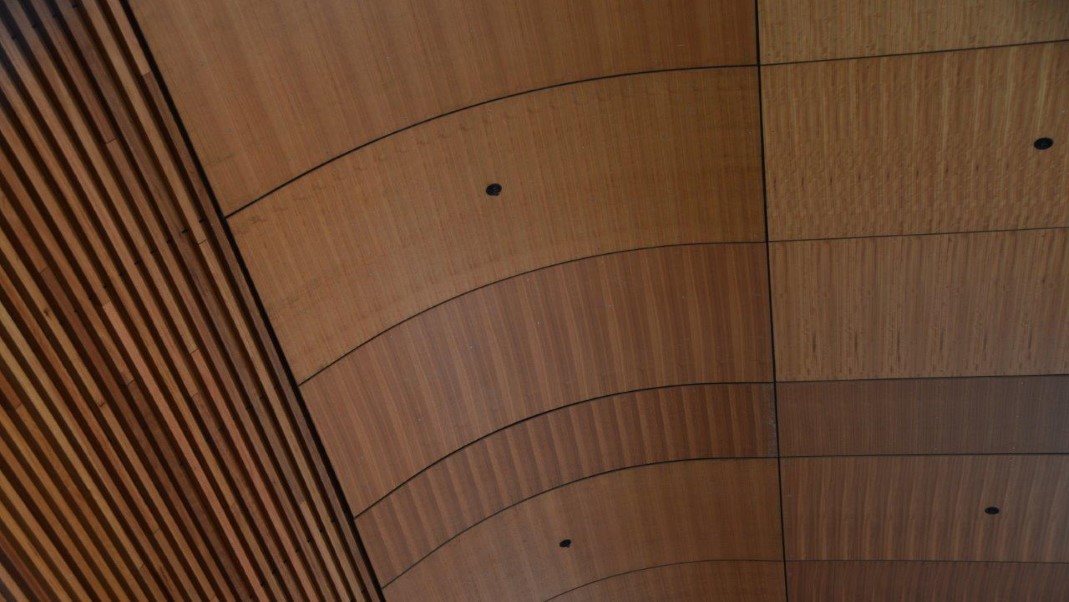15—03—2021
DOWNLOAD: Understanding The Natural Variations Of Timber
Timber has long been the material of choice for architects and designers looking to add warmth and character to a space. And when you look at the natural beauty and unique features found on every individual piece, it’s easy to see why.
While the variations found on timber are a big part of its appeal, it can also catch you by surprise if you haven’t planned for it.
So if you’re specifying timber for your next project, read on and download our whitepaper to find out more about the types of variations you’re likely to see.
Natural materials = natural variations
In nature everything is unique – every person, animal and tree that you see, is different and special in their own way. It follows then that timber materials will be unique too. Many designers are able to use this characteristic to great effect, channeling the contours, lines and natural colour variations to create unique and memorable designs.
A great example of this can be seen in our Darling Square project in Sydney. Maxi Veneer Blackbutt panels were used to complete the curved roof of the undercover walkway, and it is the natural variations of the grain and colouring of the timber that take the space to the next level.
Download our Whitepaper to read more >
Variations in colour
One of the most noticeable variations in timber can be seen in the colouring. While most people recognise that different species of trees will show obvious variations in colours, many are unaware that there can also be a significant difference in the colouring of timber from the same tree too. Keep this in mind when specifying and be sure to discuss your needs with your supplier if you require a certain level of consistency.
Download our Whitepaper to read more >
Variations in grade
Timber is graded according to aesthetic features such as veins and knots, and there are specific guidelines that set out where each piece of timber fits. At Maxiply, we grade our ply into four groups: A, B, C and D. A grade is the highest quality with no visible defects, while B grade can include small, sound knots and other minor defects. C grade is not recommended for decorative surfaces as it generally contains knots and splits which affect the appearance, even though they have been filled, while D grade is suited to non-appearance situations only as the knots and defects have not been filled.
Download our Whitepaper to read more >
Embrace the natural variations in timber
Much of the warmth and beauty of timber products comes from the imperfection of its variations. Subtle shifts in lines and colours provide visual interest and character, which allows you to create unique designs that stand out from the crowd. Download our Whitepaper for completed projects and endless inspiration.
If you’d like to discuss the possibilities of plywood and whether it’s a good fit for your next project, get in touch with our team for advice today!
15—03—2021
Timber has long been the material of choice for architects and designers looking to add warmth and character to a space. And when you look at the natural beauty and unique features found on every individual piece, it’s easy to see why.
While the variations found on timber are a big part of its appeal, it can also catch you by surprise if you haven’t planned for it.
So if you’re specifying timber for your next project, read on and download our whitepaper to find out more about the types of variations you’re likely to see.
Natural materials = natural variations
In nature everything is unique – every person, animal and tree that you see, is different and special in their own way. It follows then that timber materials will be unique too. Many designers are able to use this characteristic to great effect, channeling the contours, lines and natural colour variations to create unique and memorable designs.
A great example of this can be seen in our Darling Square project in Sydney. Maxi Veneer Blackbutt panels were used to complete the curved roof of the undercover walkway, and it is the natural variations of the grain and colouring of the timber that take the space to the next level.
Download our Whitepaper to read more >
Variations in colour
One of the most noticeable variations in timber can be seen in the colouring. While most people recognise that different species of trees will show obvious variations in colours, many are unaware that there can also be a significant difference in the colouring of timber from the same tree too. Keep this in mind when specifying and be sure to discuss your needs with your supplier if you require a certain level of consistency.
Download our Whitepaper to read more >
Variations in grade
Timber is graded according to aesthetic features such as veins and knots, and there are specific guidelines that set out where each piece of timber fits. At Maxiply, we grade our ply into four groups: A, B, C and D. A grade is the highest quality with no visible defects, while B grade can include small, sound knots and other minor defects. C grade is not recommended for decorative surfaces as it generally contains knots and splits which affect the appearance, even though they have been filled, while D grade is suited to non-appearance situations only as the knots and defects have not been filled.
Download our Whitepaper to read more >
Embrace the natural variations in timber
Much of the warmth and beauty of timber products comes from the imperfection of its variations. Subtle shifts in lines and colours provide visual interest and character, which allows you to create unique designs that stand out from the crowd. Download our Whitepaper for completed projects and endless inspiration.
If you’d like to discuss the possibilities of plywood and whether it’s a good fit for your next project, get in touch with our team for advice today!







